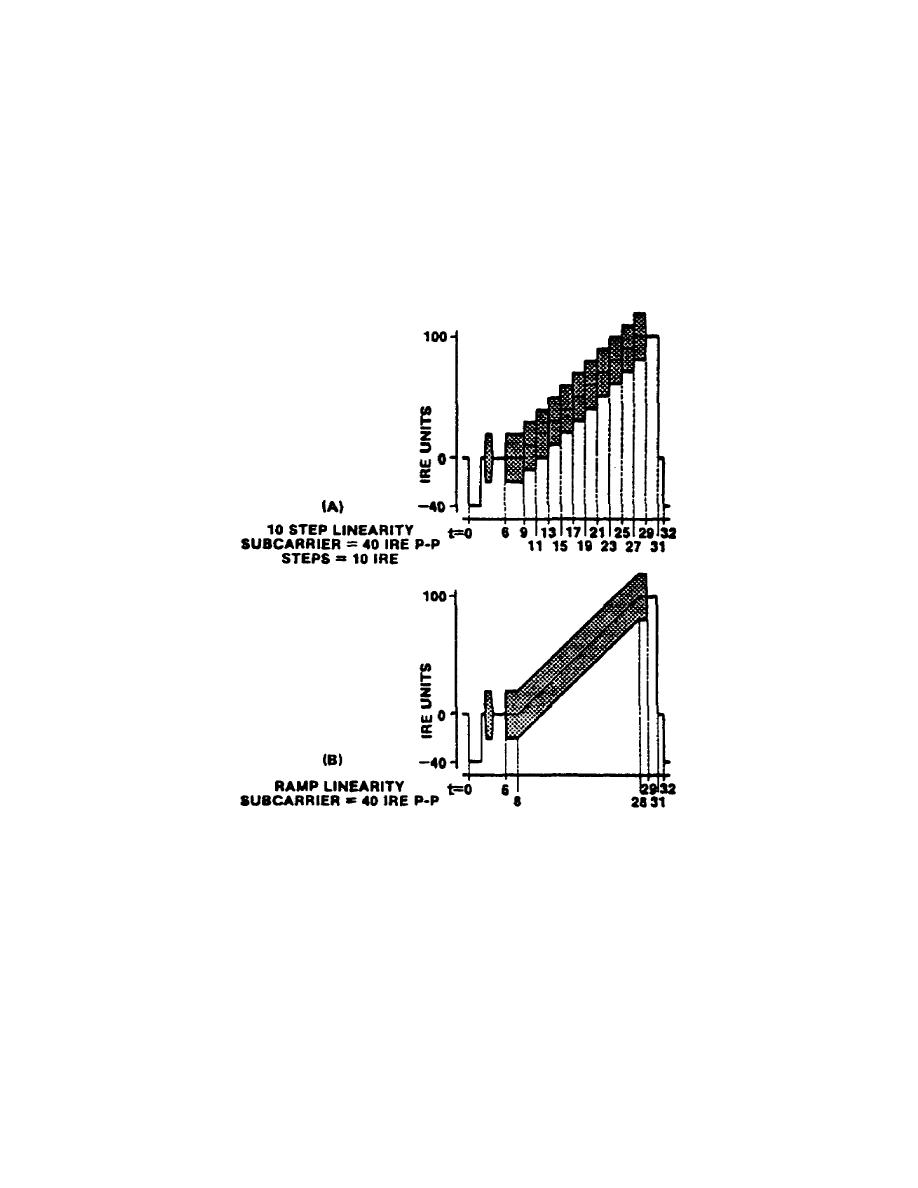
4. The gray-scale linearity (stairstep or sawtooth) signal is used to explore the
entire picture region from black to white by means of linear variation of amplitude
with time. It is useful in measuring nonlinear distortion in the system transfer
characteristic.
a. Either a stairstep with well-controlled rise-time steps, or a line-duration
sawtooth is suitable for nonlinear measurements. A stairstep signal consisting of
10 steps repeated every line and the sawtooth ramp is shown with subcarrier in
Figures 3-3a and 3-3b.
Small non-linearities throughout the grayscale are more
easily observed on this type of signal than is possible with the plain sawtooth
signal, since each of the 10 steps falls exactly on a graticule line when an IRE
scale is used.
Figure 3-3a and 3-3b
(A) 10 Step linearity with subcarrier
(B) Sawtooth ramp with subcarrier
b. Sensitivity of measurement for either the stairstep or sawtooth is increased
by superimposing 20 IRE units of 3.58 MHz subcarrier.
Any non-linearity then
results in amplitude variations of the pulses when observed through a high pass
filter.
This technique also allows measurement of non-linearity at the color
subcarrier frequency relative to low-frequency steps.
Such distortion is termed
"differential gain".
48



 Previous Page
Previous Page
